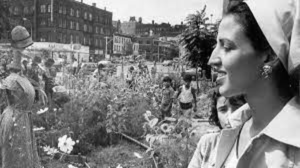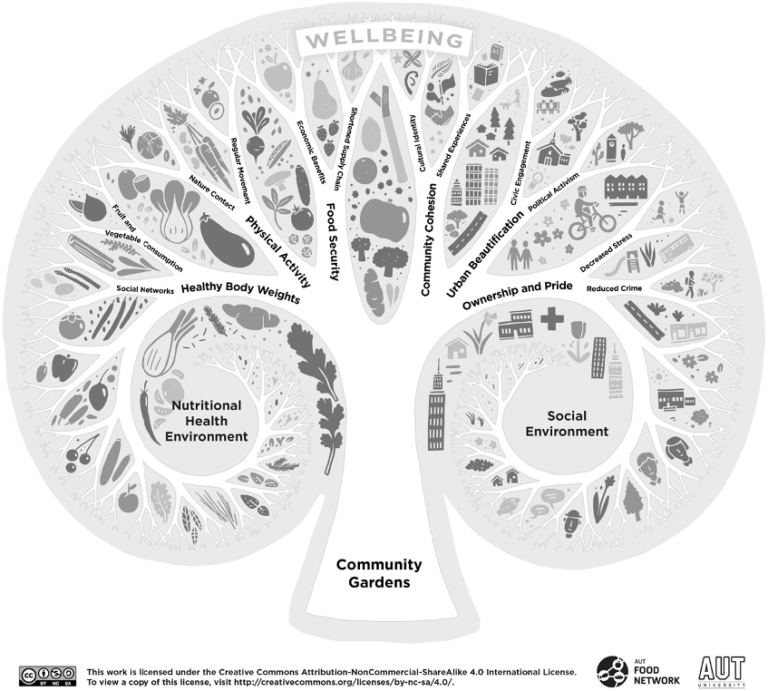Why should we care?
Natural third places, such as community gardens, provide a unique opportunity for people to connect with nature and build a sense of community. They also promote sustainability by offering innovative approaches to sustainable living. Let’s explore the unique benefits of community gardens and other natural third places.
1. Third place
Third Place: The Social Hubs That Bring People Together
Do you have a favorite spot to hang out after work? Maybe a bar or a park? These are called “third places,” or places where you spend time between your home (first place) and your work (second place). The term was introduced by a sociologist named Ray Oldenburg in the late 1980s, who noticed that public spaces in the United States were disappearing. This was because people were moving to the suburbs and using cars more. But now, researchers are studying third places in a variety of environments, like cities, and exploring how they affect our health and well-being.
The concept of the third place has evolved over time to include more than just physical locations. Now, third places can also be virtual or hybrid spaces that blur the lines between work and leisure. This includes community centers, libraries, museums, coffee shops, malls, barbershops, religious places, schools, parks, and even digital spaces like the World Wide Web and newspapers. These places allow people to connect with each other and build communities, even in a digital environment. This evolution has been driven by changes in technology and the way we work, as well as cultural differences and the need to adapt to a changing socio-economic context.
The Third Place is not a fixed or static concept. Rather, it is a constantly evolving idea that changes with our society and culture. As we continue to adapt to new technologies, lifestyles, and social norms, the Third Place will evolve to meet our changing needs and desires. It will continue to be shaped by the communities that inhabit it and will remain a crucial aspect of social life in the future.
Exploring the Diversity of Third Places
Third Place can take many forms, including third workplaces, hackerspaces, and fablabs.
Urban planners recognize that Third Place can make cities better by promoting social and cultural activities and bringing people together during tough times. During the COVID-19 pandemic, Third Place played an important role in providing spaces for local support.
An example of the potential of Third Place is the case of Safecast, a Geiger counter (radiation detector) designed in a Tokyo hackerspace to measure air quality after the Fukushima incident. Third places can provide a supportive community network that can aid in the psychological recovery of individuals affected by traumatic events such as nuclear accidents. They can also offer resources and information to help navigate complex insurance and indemnity issues. Additionally, third places can support professional development by connecting individuals with career opportunities or providing access to training and educational resources.
Third places are essential for creating sustainable, healthy, and vibrant cities. However, to fully harness their potential, we need to recognize and prioritize a new type of third place: the natural third place. By embracing and enhancing these natural third places, we can create more resilient and sustainable cities that prioritize both human well-being and environmental health.
2. Natural third place
Definition
Natural third places are becoming increasingly popular in urban areas due to their positive impact on individuals and communities. Natural third place is a space that fosters sustainable living practices, community cohesion, and economic opportunities.
Natural third places like parks and other green spaces can provide economic opportunities and job training for local residents, foster social connections, and offer a neutral ground for people from different backgrounds to come together and connect. These places can be particularly important in urban areas where access to green spaces may be limited.
Investing in natural third places is a worthwhile endeavor for urban managers, real estate professionals, and community members alike, as they contribute to the well-being and resilience of the communities they serve. By promoting physical and mental health, social cohesion, and sustainable living practices, natural third places serve as hybrid and green spaces for sharing knowledge and cultures toward nature and promoting experimentation with nature and co-creation of knowledge to respect the environment.
Growing Gardens, Growing Communities
Community gardens are shared spaces where residents come together to cultivate land and grow plants, vegetables, and fruit. These gardens have a rich history that dates back to the 19th century when individuals were first given the opportunity to cultivate their own allotments. The first community gardens appeared in North America in the 1970s as a response to economic crises and urban decay. They offered a way to reclaim neglected spaces and transform them into vibrant community assets.Over time, urban agriculture continued to develop, and community gardens emerged as a way to promote environmental sustainability and community building.
 1st community garden, created by Liz Christy, Source : BoweryBoys
1st community garden, created by Liz Christy, Source : BoweryBoys
Community gardens can differ in design and purpose across Europe depending on social and cultural contexts. For example, the “Incredible Edible” Network in England grows food in vacant spaces to share for free, promoting community building and a circular economy. Community gardens can combat urbanization, address food insecurity, and connect to social movements and alternative cultures. They offer an adaptable solution to many social and environmental challenges facing urban areas in Europe.
Community Gardens: More Than Just a Green Space
Community gardens are unique spaces that can have different values and roles depending on who you ask. Municipalities may see them as temporary projects while gardeners view them as a way to empower citizens.

- From a political perspective, community gardens can be used as a base to take direct action and occupy public spaces to demand more vegetation in urban environments.
- From a social perspective, community gardens promote a sense of ownership and belonging, social mixing, and exchange, and encourage mutual aid and collective activities. Cultivating a garden can become an educational and social hub that fosters connections with others and with the earth.
- From a health perspective, community gardens provide access to healthy food at a lower cost, promote physical and psychological well-being, and help to preserve health.
- On an economic point of view, having access to a community garden promotes responsible consumption and allows gardeners to realize the impact of their actions on themselves and others.
- Finally, from an environmental perspective, community gardens are designed to be sustainable by being economical in their use of water and energy and recycling waste, promoting a better living environment, overall well-being, and the development of biodiversity.
Urban agriculture is always changing and getting better, helping us find new ways to produce and consume food that are good for the planet and our communities.
Overall, community gardens are like experimental labs that teach us how to garden, manage, share, and protect the environment, while also helping people become more self-sufficient, reducing pollution, flooding, and heat, and promoting community building and a circular economy.
Examples beyond community gardens
Indoor and outdoor natural third places such as participatory biology labs, green cultural centers, parks, and gardens provide unique opportunities for education, creativity, and artistic expression. They also offer a way for people to engage in sustainable living practices and promote environmental conservation. These spaces are often driven by values such as the desire to change the world, create a new economy, strengthen social connections, and protect the environment or historical heritage.
Participatory biology labs such as BlueCity Lab, The Green Fab Lab, and UrsuLaB promote community involvement and education through experimentation and hands-on projects, while also focusing on creating a sustainable future within planetary boundaries. Green cultural centers like Matsegården Stigsbo and Art Garden Ganja offer opportunities for art and cultural experiences in an outdoor garden setting, as well as community engagement and connection with nature.
Natural third places are more than just spaces – they are opportunities for us to connect with each other and nature, and to foster a sense of community. Imagine having the chance to create a space where you and others can come together to share knowledge, engage in sustainable living, and promote environmental conservation. By building natural third places, we can create a more resilient and inclusive society, one that is better equipped to tackle the challenges of the future. So, what kind of natural third place would you create?
Key takeaways:
- A natural third place is 4 things: people + places + process + nature
- Why make Natural Third Places? To collectively (re)create society while including nature, wherever the conditions allow and require it.
- Community gardens are only an example of Natural third place, many others similar practices can be found all over the world.
Do you want to know more?
- A community garden that has brought hope to the favela https://www.youtube.com/watch?v=78W04nSpxSE
- Podcast – Why you need a Third Place and how to find one? https://www.jordanharbinger.com/why-you-need-a-third-place-and-how-to-find-one/
- Learn more about Green Infrastructure as a general concept in our previous article called: WHAT’S THAT GREEN INFRASTRUCTURE? – EVERYTHING YOU NEED TO KNOW